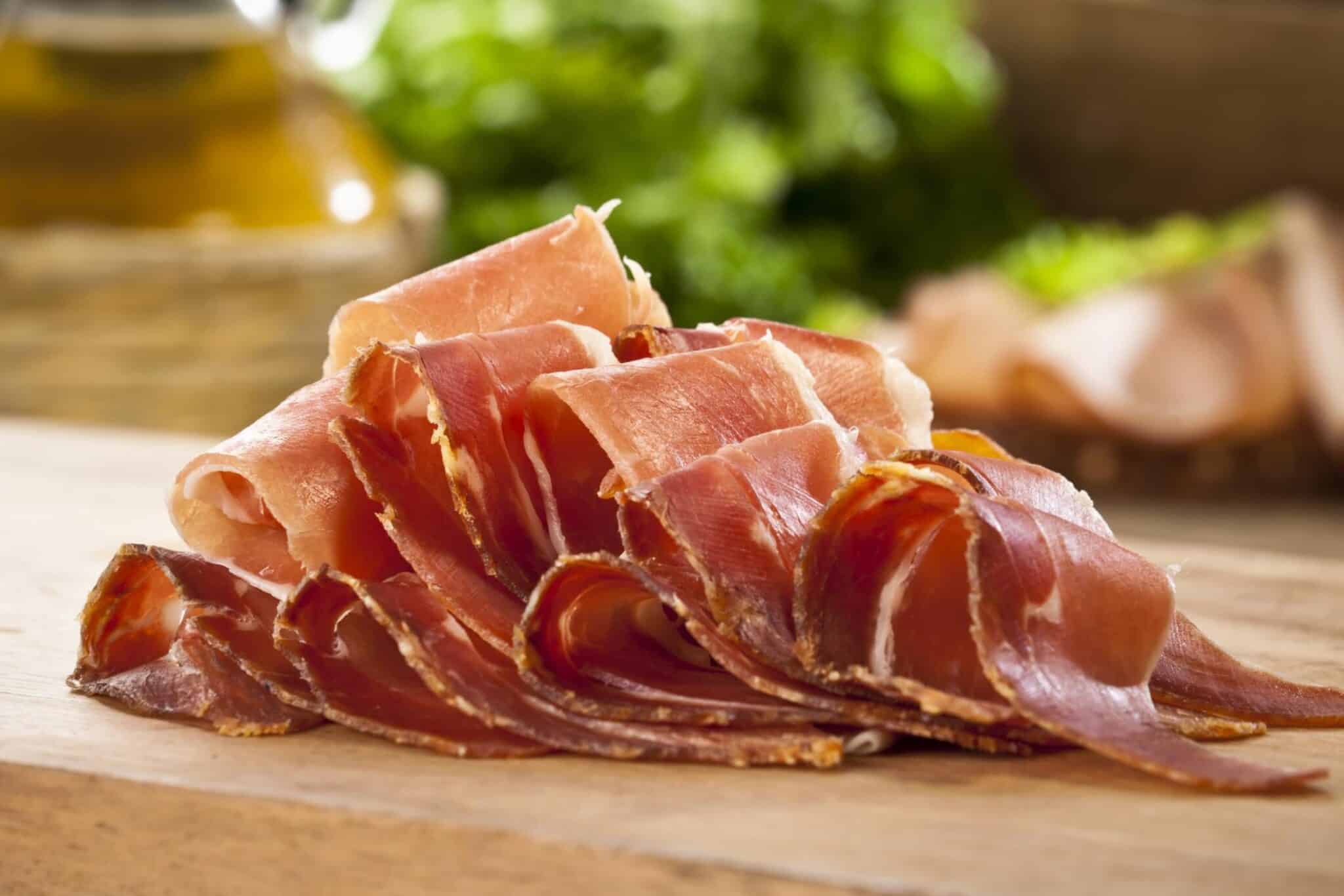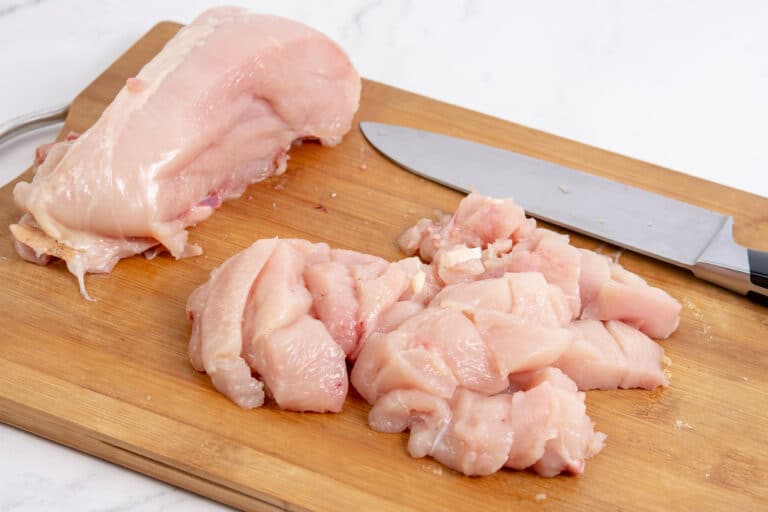Freezing Prosciutto: Safety and Quality Considerations
Prosciutto, a famous Italian delicious and salty cured ham, is available as either thinly sliced or fully cooked and ready to eat. You can fry thinly sliced prosciutto until nice and crispy. Or, eat the whole prosciutto, where you’ll cut slices yourself.
Regarding freezing prosciutto, you can freeze pretty much anything in most cases. But does that apply to prosciutto? Is it possible to freeze this cured meat without ruining it? Well, the answer to that will might surprise you. Stay locked to find out more.
Can You Freeze Prosciutto?
Yes, you can freeze prosciutto. However, doing so is not recommended, and here’s why:
- Freezing prosciutto affects its quality and flavor. Prosciutto has a delicate texture and flavor, unlike other cured meats like bologna. The mild flavor and texture make it prone to quality deterioration when frozen, especially for long. So, consider this before deciding on freezing your prosciutto.
- Freezing prosciutto slices makes them prone to freezer burns. Prosciutto slices are usually very thin, making them delicate and prone to freezer burns. Freezer burns make food have an off-flavor and appearance.
- Frozen prosciutto slices may fall apart when thawed. As mentioned, prosciutto is usually thinly sliced. The thin slices are so fine and delicate, making it easy for them to fall apart when defrosting.
- May absorb flavors of other foods in the freezer. Prosciutto has a delicate flavor and texture. This makes it easy to absorb the aromas and flavors of different foods in the freezer, especially if they have a strong smell or taste.
How To Freeze Prosciutto
If you’ve decided to freeze this delicate cured meat, you need to know how to do it safely. Otherwise, you risk your meat losing its flavor and aroma. There are a couple of ways of freezing prosciutto, but here are the most efficient ones:
Air Tight Wrap
Air-tight wraps ensure your meat is tightly sealed and no air gets in. The absence of air means that no microorganisms survive in the package. This packaging is also effective at preventing your prosciutto from losing moisture and drying out.
To freeze your prosciutto using air-tight wraps, you need first to buy them. These wraps are not easily found in your local butcher or grocery store. However, you can find them at specialty stores like Trader Joe’s or Whole Foods.
Once you have them, wrap your prosciutto slices between two sheets of wax paper and seal them in an air-tight freezer bag. Then, wrap the top of the freezer bag tightly, allowing no air to get in.
Don’t wash, soak, or cover your cured prosciutto with water, as that can let moisture get trapped inside the package, making it soggy. Moisture can also damage your meat, discoloring it. So, anytime you find your prosciutto discolored, don’t eat it, as it’s likely damaged.
Vacuum Sealing
Vacuum sealing is a cost-effective way of preserving meat in the freezer as it removes air and moisture. It also comes with an added layer of protection against harmful bacteria.
Start by freezing your prosciutto slices to ensure they’re entirely sealed before placing them in the vacuum-sealed pouch. Failure to do this increases the chance of your meat spoiling. You’ll need a vacuum sealer if you want to use this storage method. These are generally found in most grocery stores.
Safely seal your prosciutto slices by wrapping them with parchment paper. Then place them inside the vacuum-sealed pouch. Once the pouch is sealed, press out the air and freeze it. Doing so ensures your prosciutto lasts longer than when you use a regular freezer bag.
How Long Does Frozen Prosciutto Last?
Provided you’ve stored your prosciutto well in the freezer, it can last indefinitely. However, that is regarding safety, not quality.
Frozen prosciutto can retain its quality at maximum freshness within four weeks. During this time, the meat will be almost as good as when thawed, although the flavor may not be intense.
So, what happens if you freeze prosciutto past this time?
The good thing is that the prosciutto can still be used, even if it has slight freezer burns or is past its best-by date. However, its quality will deteriorate. It will not be perfect for a charcuterie board but may be used to cook with. You can slice, chop, shred, or tear it and use it to flavor casseroles and oven-baked dishes or as a pizza topping.
How To Thaw Frozen Prosciutto
Knowing how to thaw frozen prosciutto is crucial to prevent food poisoning during thawing. The best method of defrosting prosciutto is placing it in the fridge.
Leave your meat in a plastic bag and place it on the fridge’s bottom shelf. Here, there’s no direct heat from incoming air through vents or direct lights over the freezer drawer. Let the prosciutto stay there overnight, and it will thaw out safely.
Once defrosted, cook or consume the prosciutto soon before any bacteria gets the time to develop. It’s also crucial to avoid cross-contamination when dealing with meats to be eaten or cooked.
Use separate cutting boards for meat, fish, and poultry, and avoid using the same tools to prepare one type of meat on a different kind without cleaning it in between. Keep raw meats and poultry separate from cooked or ready-to-eat ones. Lastly, use individual fridge shelves for raw meats and fish to avoid contaminating other foods on the same shelf.
How To Use Thawed Prosciutto
You can use prosciutto as part of any recipe calling for an uncooked frozen product or in cooked dishes. Recipes for uncooked frozen meat include sandwiches or pizza toppings, while cooked dishes include pasta sauces.
After thawing, don’t re-freeze the prosciutto. Doing so causes the meat to absorb moisture from its tissues, leading to an increased risk of spoilage.
Conclusion
Can you freeze prosciutto? Yes, you can freeze prosciutto, and the meat becomes safe to eat afterward. Just ensure you portion and wrap it tightly so that its quality does not deteriorate quickly.
However, if you love prosciutto’s rich flavor and texture, I’d recommend you don’t freeze it. Doing so can affect the quality and taste of the meat.




